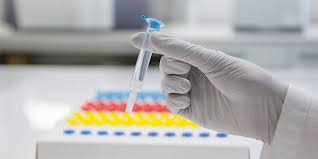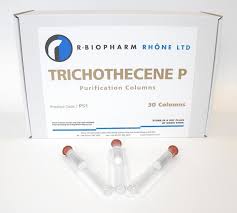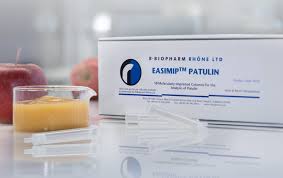Solid Phase Extraction and Clean Up Column
Solid Phase Extraction and Immunoaffinity Column for Mycotoxin, Vitamins and Antibiotics.
Solid phase extraction is used in the analysis of compounds to get rid of interfering substances. These are dissolved or suspended in the mixture. SPE is also used to concentrate samples which otherwise are not detected because they are below the limit of detection of the instrument. The technique used in the purification of the analyte of interest depends on the affinity of the solute in the liquid or often called mobile phase for the stationary phase through which the sample passes through. For example a non-polar compound will have more affinity to a non-polar stationary phase than with the less polar mobile phase. Thus the compound of interest or the undesired impurity will be retained. Stationary phases can be made of silica gel beads with functional groups bonded to it. Non-polar columns will have probably a C18 hydrocarbon bonded to its surface. It can also be coated with antibodies which will attach specific antigens to it. Such columns are called immunoaffinity columns. Another stationary phase used by r-Biopharm to retain analyte of interest is by using a special molecular imprinted polymer. If the retained analyte is of interest then a second step is necessary to elute it out with another solvent. For trace concentration or enrichment of solutes at very low levels, large volumes of the mixture can be passed through the column and then eluted out with a suitable eluent.
Immunoaffinity Columns
Immunity affinity columns are necessary for the accurate analysis of mycotoxins prior to injection to HPLC, GC, and LC MS/MS. They are used often for cleaning up of food samples that are complex or colored. The mycotoxin of interest is attached to the monoclonal antibody specific to the toxin and separating the food matrix from the sample. The mycotoxin is then removed from the column by elution with a solvent. It provides a very clean chromatogram and lower the limit of detection. r-Biopharm immunoaffinity columns are AOAC and CEN approved and exceed the specifications of the EU Method performance criteria. Columns are available for single or multi toxin format. r-Biopharm immunoaffinity columns are also available for clean up before vitamin detection and detection of chloramphenicol. The EASI-EXTRACT chloramphenicol clean up column has antibody attached to a gel in the column.
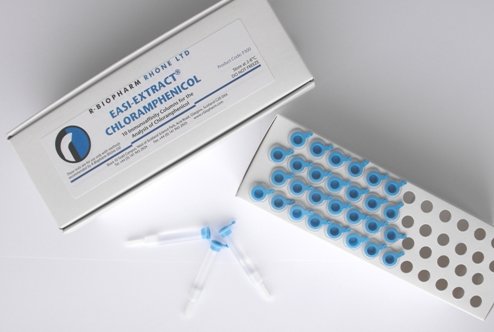
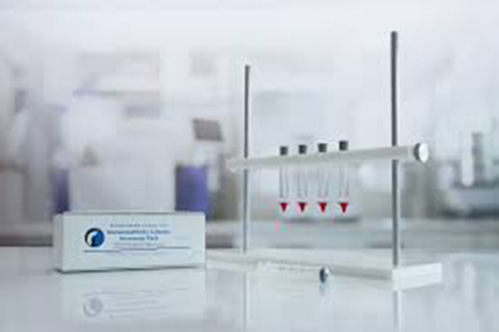
Solid Phase Extraction Columns
Solid phase extraction columns contains a solid phase made up of silica gel beads coated with a functional group which will attach the analyte or impurities of interest. This will separate the interested analyte or the impurity from the mobile phase. This will purify the solution and will produce a chromatogram which is neater and has a higher detection limit. A solid phase extraction usually consists of 5 steps: -
- Sample pretreatment i.e. extraction and conditioning of extract.
- Solvent solvation and pre-equilibrium.
- Sample application.
- Elution of interfering matrix and rinsing of column.
- Elution of the analyte.
The r-Biopharm Trichothecenes P columns are solid phase clean up columns for purification of trichothecenes from cereals. It can be used for both type A and type B trichothecenes. They help remove interfering compounds and pigments from cereals samples. Thus giving a better chromatogram and improving accuracy of results. This procedure takes 20mins to perform.
r-Biopharm EASIMIPTM PATULIN columns use a molecularly imprinted polymer for detection of patulin in apple juice or puree. This polymer is specially formulated to retain patulin. Patulin is a polyketide which is a white powder soluble in acidic water as well as organic solvents. It is a mycotoxin produced by Aspergillus and Penicillium and Byssochlamys and are commonly found in rotting apples. Their presence is an indication of the quality of apples used in production

We provide the best services about science.
About Company
Sitemap
Please contact our friendly sales staff for more information.
Feel free to ask us questions. We would love to assist you !




